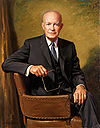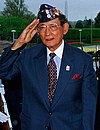| # | Start | End | Name | Class year | Notability | References |
| 3 | 1812 | 1814 | Joseph Gardner Swift | 1802 | Brigadier general; first graduate of the Academy; Chief of Engineers | [a][17] |
| 4 | 1814 | 1817 | Alden Partridge | 1806 | Captain; served as Acting Superintendent and Professor of Engineering; his administration was regarded as unsatisfactory and negligent to duties; when Sylvanus Thayer was appointed, Partridge refused to relinquish command and was court-martialed; he was sentenced to be cashiered in November 1817, and resigned from the Army in April 1818 | [a][46] |
| 5 | 1817 | 1833 | Sylvanus Thayer | 1808 | Brigadier general; "Father of West Point"; emphasized engineering; founded engineering schools; helped found the Academy's Association of Graduates; Sylvanus Thayer Award created by the Academy in his honor | [a][47][48] |
| 6 | 1833 | 1838 | René Edward De Russy | 1812 | Brigadier general; military engineer; Union Army veteran | [a][49] |
| 7 | 1838 | 1845 | Richard Delafield | 1818 | Major general; Chief of Engineers; American Civil War veteran; served as 7th, 11th, and 13th Superintendents | [a][17] |
| 8 | 1845 | 1852 | Henry Brewerton | 1819 | Brigadier general; military engineer; Union Army veteran | [a][50] |
| 9 | 1852 | 1855 | Robert E. Lee | 1829 | Colonel USA; graduated second in his class at the Academy, without demerits; son George Washington Custis Lee, class of 1854, graduated first in class; served in Confederate States Army ( 1861–1865); President, Washington and Lee University (1865–70) | [a][51] |
| 10 | 1855 | 1856 | John Gross Barnard | 1833 | Major general; military engineer; Union Army veteran | [a][52] |
| 11 | 1856 | 1861 | Richard Delafield | 1818 | Major general; Chief of Engineers; Union Army veteran; served as 7th, 11th, and 13th Superintendents | [a][17] |
| 12 | 1861 | 1861 | Pierre Gustave Toutant (P.G.T.) Beauregard | 1838 | General CSA; military engineer; ordered the firing of shots at Fort Sumter, South Carolina that started the Civil War | [a][53] |
| 13 | 1861 | 1861 | Richard Delafield | 1818 | Major general; Chief of Engineers; Union Army veteran; served as 7th, 11th, and 13th Superintendents | [a][17] |
| 14 | 1861 | 1864 | Alexander Hamilton Bowman | 1825 | Lieutenant Colonel; military engineer; son Charles Stuart Bowman graduated from the Academy, class of 1860 | [a][54] |
| 15 | 1864 | 1864 | Zealous Bates Tower | 1841 | Major general; military engineer; Union Army veteran | [a][55] |
| 16 | 1864 | 1866 | George Washington Cullum | 1833 | Brigadier general; military engineer; wrote Biographical Register of the Officers and Graduates of the U.S. Military Academy at West Point, N.Y. in 1891 and developed the Cullum number system | [a][56] |
| 17 | 1866 | 1871 | Thomas Gamble Pitcher | 1845 | Brigadier general; veteran of Battle of Harper's Ferry, Mexican–American War, and the Civil War | [a][57] |
| 18 | 1871 | 1876 | Thomas H. Ruger | 1854 | Major general; military engineer and lawyer; veteran of Civil War; military engineer and lawyer; military Governor of Georgia (1868) | [a][58] |
| 19 | 1876 | 1881 | John McAllister Schofield | 1853 | Lieutenant general; recipient of the Medal of Honor for his actions leading an attack at the Battle of Wilson's Creek; Superintendent of the Academy (1876–81); Commanding General of the United States Army (1888–95) | [a][59] |
| 20 | 1881 | 1882 | Oliver Otis Howard | 1854 | Major general; recipient of the Medal of Honor for his actions leading an attack at the Battle of Seven Pines despite wound which resulted in the loss of his right arm; led the campaign against Chief Joseph and the Nez Perce tribe; founder of Howard University | [a][30] |
| 21 | 1882 | 1887 | Wesley Merritt | 1860 | Major general; veteran of the Civil War and Spanish–American War; first Military Governor of the Philippines | [a][59] |
| 22 | 1887 | 1889 | John Parke | 1849 | Major general; military engineer; Union Army veteran | [a][60] |
| 23 | 1889 | 1893 | John Moulder Wilson | 1860 | Brigadier general; recipient of the Medal of Honor for his actions at the Battle of Malvern Hill though acutely ill; Chief of Engineers (1897–1901) | [a][17] |
| 24 | 1893 | 1898 | Oswald Herbert Ernst | 1864 | Major general; military engineer; Union Army and Spanish–American War veteran | [a][61] |
| 25 | 1898 | 1906 | Albert Leopold Mills | 1879 | Major general; recipient of the Medal of Honor for continuing to lead his men at the Battle of San Juan Hill despite being shot in the head and temporarily blinded; appointed Superintendent to West Point by President McKinley, which carried automatic promotion from First Lieutenant to Colonel | [a][62][63] |
| 26 | 1906 | 1910 | Hugh L. Scott | 1876 | Major general; learned to speak many western Native American languages; Chief of Staff of the Army (1914–17) | [a][64] |
| 27 | 1910 | 1912 | Thomas Henry Barry | 1877 | Major general; cavalry and infantry officer; veteran of Indian Wars, China Relief Expedition, and Philippine–American War | [a][65] |
| 28 | 1912 | 1916 | Clarence Page Townsley | 1881 | Major general; coastal artillery officer; commanded 30th Infantry Division during World War I | [a][66] |
| 29 | 1916 | 1917 | John Biddle | 1881 | Major general; military engineer; World War I veteran | [a][67] |
| 30 | 1917 | 1919 | Samuel Escue Tillman | 1869 | Brigadier general; recalled from retirement during World War I to serve as superintendent; refused to add military aviation to the curriculum; instructor at the Academy for more than 30 years; author of numerous books on chemistry and geology | [a][68] |
| 31 | 1919 | 1922 | Douglas MacArthur | 1903 | General of the Army, Field Marshal in the Philippine Army; United States occupation of Veracruz; Second Battle of the Marne, Battle of Saint-Mihiel, Meuse-Argonne Offensive during World War I; commander of the 42nd Infantry Division; established Honor Code, and intramural sports at the U.S. Military Academy; brigade commander in the Philippine Division; commander of the Philippine Department; Chief of Staff of the United States Army (1930–35); recipient of the Medal of Honor for actions during the Battle of Bataan, commander of the South West Pacific Area during World War II; Supreme Commander of the Allied Powers during the Occupation of Japan; Korean War; grandson of Wisconsin Governor Arthur MacArthur Sr.; son of Lieutenant General and Medal of Honor recipient Arthur MacArthur Jr. | [a][69][70] |
| 32 | 1922 | 1925 | Fred Winchester Sladen | 1890 | Major general; Superintendent of Fort McHenry National Monument (1931–32) | [a][71] |
| 33 | 1926 | 1927 | Merch Bradt Stewart | 1896 | Brigadier general; infantry officer; Spanish–American War veteran; commander 175th Infantry Brigade during World War I | [a][72] |
| 34 | 1927 | 1928 | Edwin Baruch Winans | 1891 | Major general; instructor at military schools; commended for leadership of the 10th Cavalry Regiment | [a][73] |
| 35 | 1929 | 1932 | William Ruthven Smith | 1892 | Major general; artillery and infantry officer; commanded 36th Infantry Division during World War I | [a][74] |
| 36 | 1932 | 1938 | William Durward Connor | 1897 | Major general; awarded two Silver Stars; Commandant of Army War College | [a] |
| 37 | 1938 | 1940 | Jay Leland Benedict | 1904 | Major general; artillery and staff officer; Army General Staff during World War II | [a][75] |
| 38 | 1940 | 1942 | Robert L. Eichelberger | 1909 | General; American Expeditionary Force Siberia; commanded Eighth United States Army in World War II | [a][76] |
| 39 | 1942 | 1945 | Francis Bowditch Wilby | 1905 | Major general; Chief of Staff of First United States Army (1939–41) | [a][77] |
| 40 | 1945 | 1949 | Maxwell Davenport Taylor | 1922 | General; developed the phrasing of the Cadet Honor Code at the Academy; commander of 101st Airborne Division (1944–45); Chief of Staff of the Army (1955–59); Chairman of the Joint Chiefs of Staff (1962–64); United States Ambassador to South Vietnam (1964–65) | [a][78] |
| 41 | 1949 | 1951 | Bryant Edward Moore | August 1917 | General; commanded 8th Infantry Division killed in a helicopter crash on 24 February 1951 while commanding the IX Corps during the Korean War | [a][79] |
| 42 | 1951 | 1954 | Frederick Augustus Irving | April 1917 | Major general; commander 24th Infantry Division during World War II | [a][80] |
| 43 | 1954 | 1956 | Blackshear M. Bryan | 1922 | Lieutenant general; commanded Prisoner of War Division for all the United States during World War II; commanded First United States Army (1957–60); his son, Blackshear M. Bryan Jr., class of 1954, was killed in Vietnam | [a][81] |
| 44 | 1956 | 1960 | Garrison H. Davidson | 1927 | Lieutenant general; Academy football coach (1933–37); combat engineer during World War II and the Korean War; helped construct The Pentagon | [a][82] |
| 45 | 1960 | 1963 | William Westmoreland | 1936 | General; Distinguished Eagle Scout; given the Pershing Sword for the most able cadet upon graduation from the Academy; commander 101st Airborne Division; commander Military Assistance Command, Vietnam (1964–68); Chief of Staff of the Army (1968–72) | [a][83] |
| 46 | 1963 | 1966 | James Benjamin Lampert | 1936 | Lieutenant general; combat engineer during World War II; early pioneer of nuclear weapons and nuclear power, served as General Leslie Groves' executive officer as part of the Manhattan Project after World War II; his father, James G. B. Lampert, class of 1910 was killed in World War I | [a][84] |
| 47 | 1966 | 1969 | Donald V. Bennett | 1940 | General; Director of the Defense Intelligence Agency (1969–72); commander United States Army Pacific (1972–74) | [a][85] |
| 48 | 1969 | 1970 | Samuel William Koster | 1942 | Major general but demoted to brigadier general and denied a promotion to lieutenant general for covering up the My Lai Massacre | [a][86] |
| 49 | 1970 | 1974 | William Allen Knowlton | January 1943 | General; World War II and Vietnam War veteran; his daughter married General David Petraeus who was a cadet while Knowlton was Superintendent; Chief of Staff for United States European Command (1974–76) | [a][87] |
| 50 | 1974 | 1977 | Sidney Bryan Berry | 1948 | Lieutenant general; Korean and Vietnam War veteran, wounded twice in Vietnam; Superintendent during the time women were first admitted to the Academy; Commissioner of Public Safety for the state of Mississippi (1980–84) | [a][88] |
| 51 | 1977 | 1981 | Andrew Jackson Goodpaster | 1939 | General; 8th Infantry Division (1961–62); Supreme Allied Commander, Europe (1969–74); Commander in Chief of the United States European Command (CINCEUR) (1969–74); retired then became Superintendent, then retired a second time | [a][89] |
| 52 | 1981 | 1986 | Willard Warren Scott Jr. | 1948 | Lieutenant general; commander 25th Infantry Division (1976–78); commander V Corps (1980–81) | [a][90] |
| 53 | 1986 | 1991 | Dave Richard Palmer | 1956 | Lieutenant general; military historian; instructor at the Academy and the Vietnamese National Military Academy | [91] |
| 54 | 1991 | 1996 | Howard D. Graves | 1961 | Lieutenant general; Rhodes Scholar; military engineer; Chancellor of the Texas A&M University System (1999–2003) | [92] |
| 55 | 1996 | 2001 | Daniel William Christman | 1965 | Lieutenant general; graduated first in his class in 1965; Senior Vice President for International Affairs, U.S. Chamber of Commerce; four-time recipient of the Defense Distinguished Service Medal. | [93] |
| 56 | 2001 | 2006 | William James Lennox Jr. | 1971 | Lieutenant general; artillery and staff officer; Deputy Commanding General Eighth United States Army; doctorate in literature from Princeton University | [94] |
| 57 | 2006 | 2010 | Franklin Lee Hagenbeck | 1971 | Lieutenant general; commander 10th Mountain Division (2001–03) | [95] |
| 58 | 2010 | 2013 | David H. Huntoon | 1973 | Lieutenant general; Director of the Army Staff; Former Commandant of the U.S. Army War College | [96] |
| 59 | 2013 | 2018 | Robert L. Caslen | 1975 | Lieutenant general; chief of staff for Combined Joint Task Force-180 (CJTF-180) in Afghanistan from May through September 2002; Chief of the Office of Security Cooperation for Iraq | [97] |
| 60 | 2018 | 2022 | Darryl A. Williams | 1983 | Lieutenant general; Managed U.S. response to the West African Ebola virus epidemic in 2016; Commander of NATO Allied Land Command (2016–2018); First black superintendent in the academy's history | [98] |
| 61 | 2022 | | Steven W. Gilland | 1990 | Lieutenant general; Academy's commandant of cadets (2017–2019), Commander of the 2nd Infantry Division (2019–2021) | [99] |
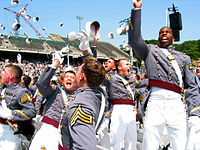








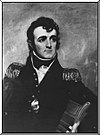


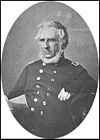
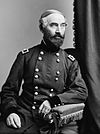
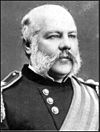
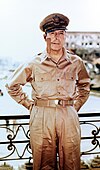
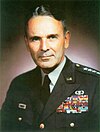

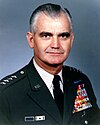
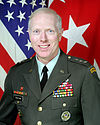







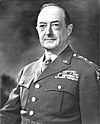

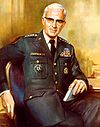
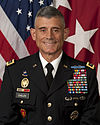
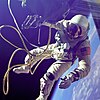

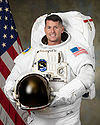

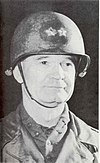
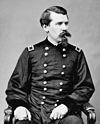


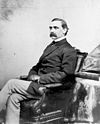
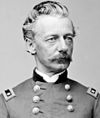

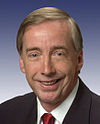
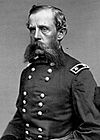
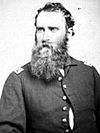
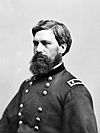
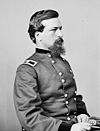

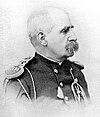





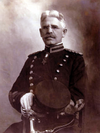

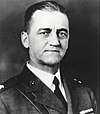
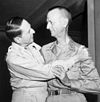
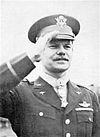


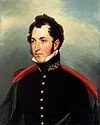
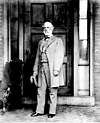




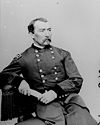
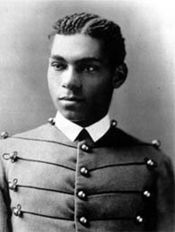


 French
French Deutsch
Deutsch